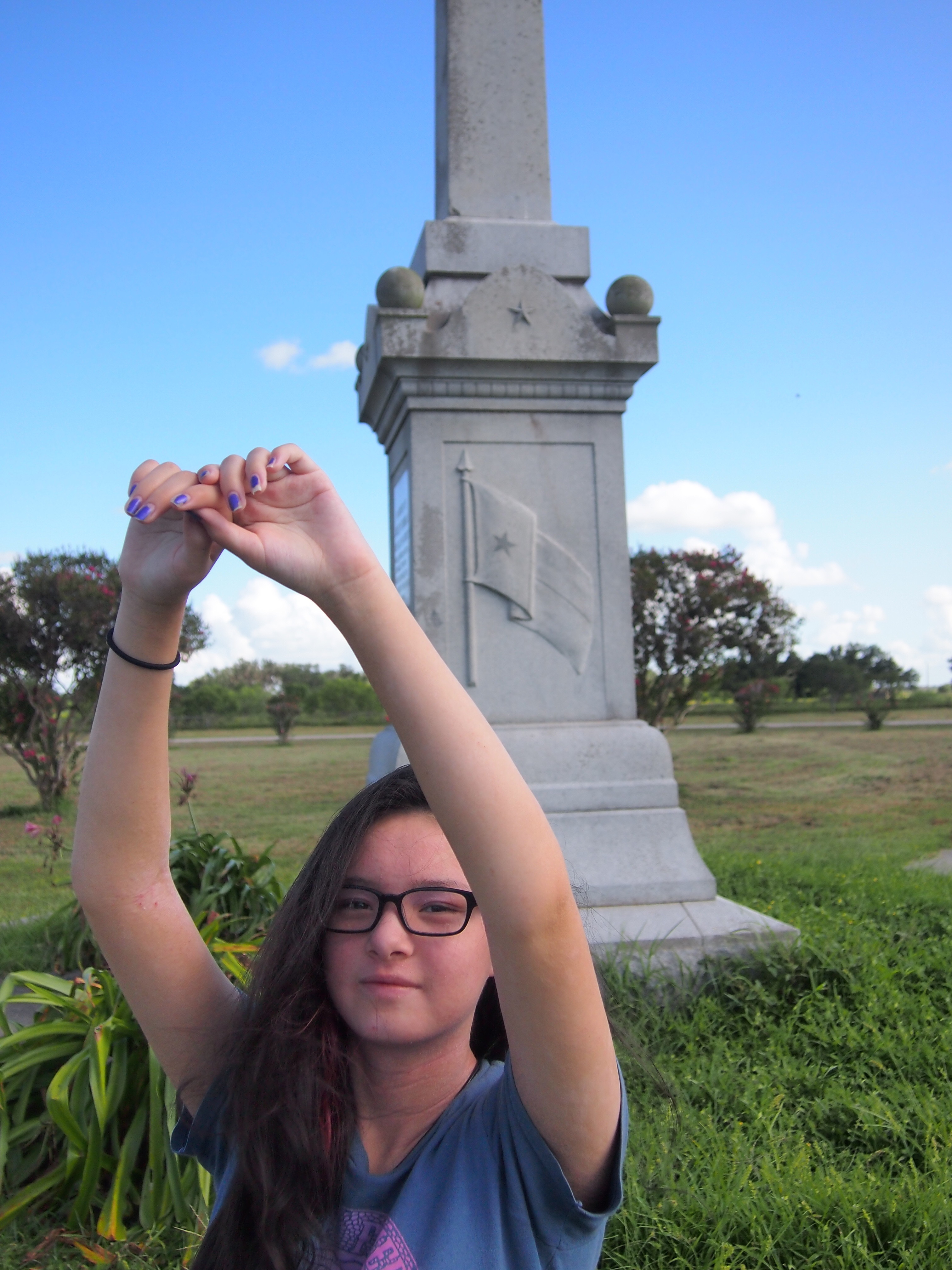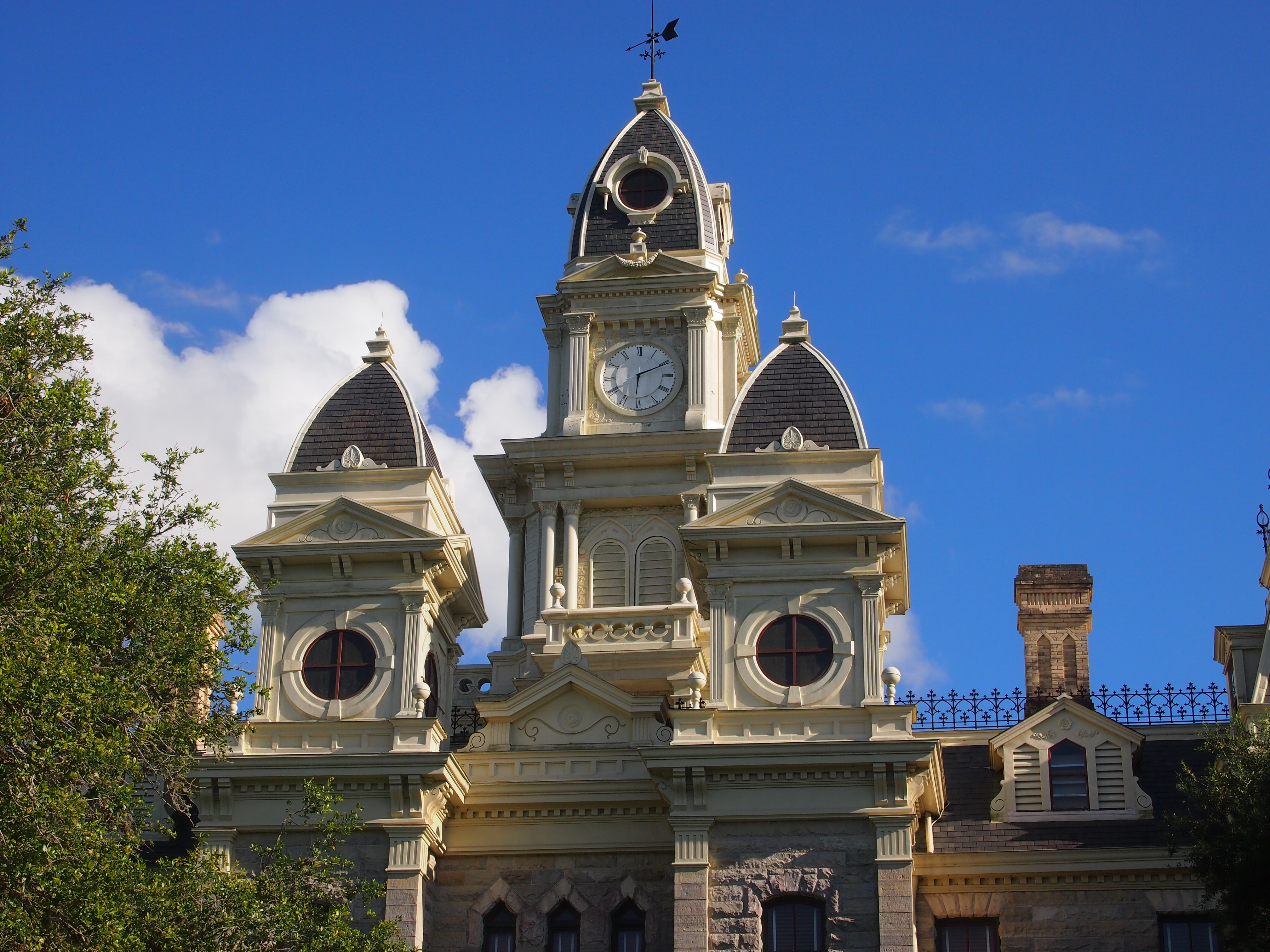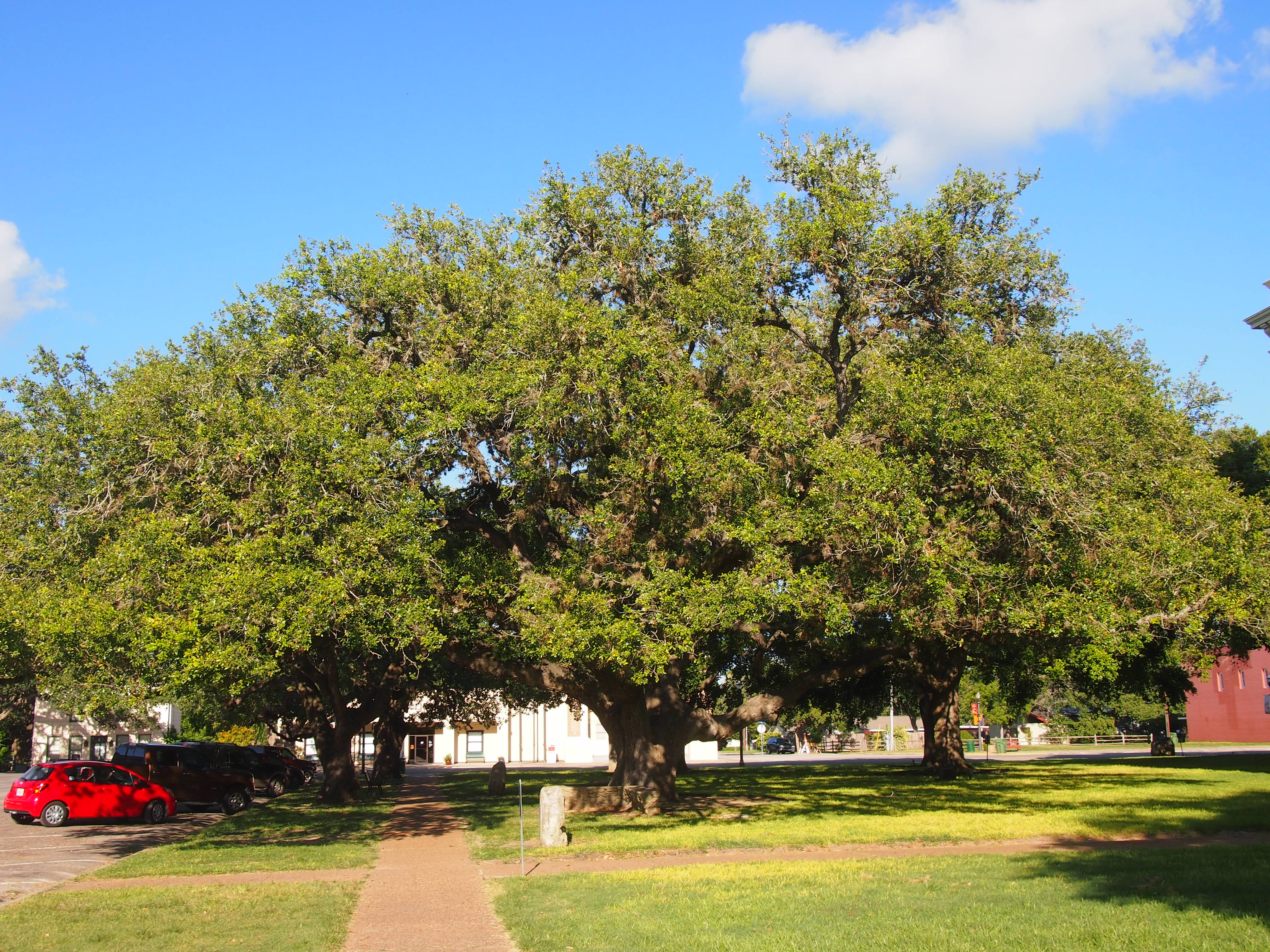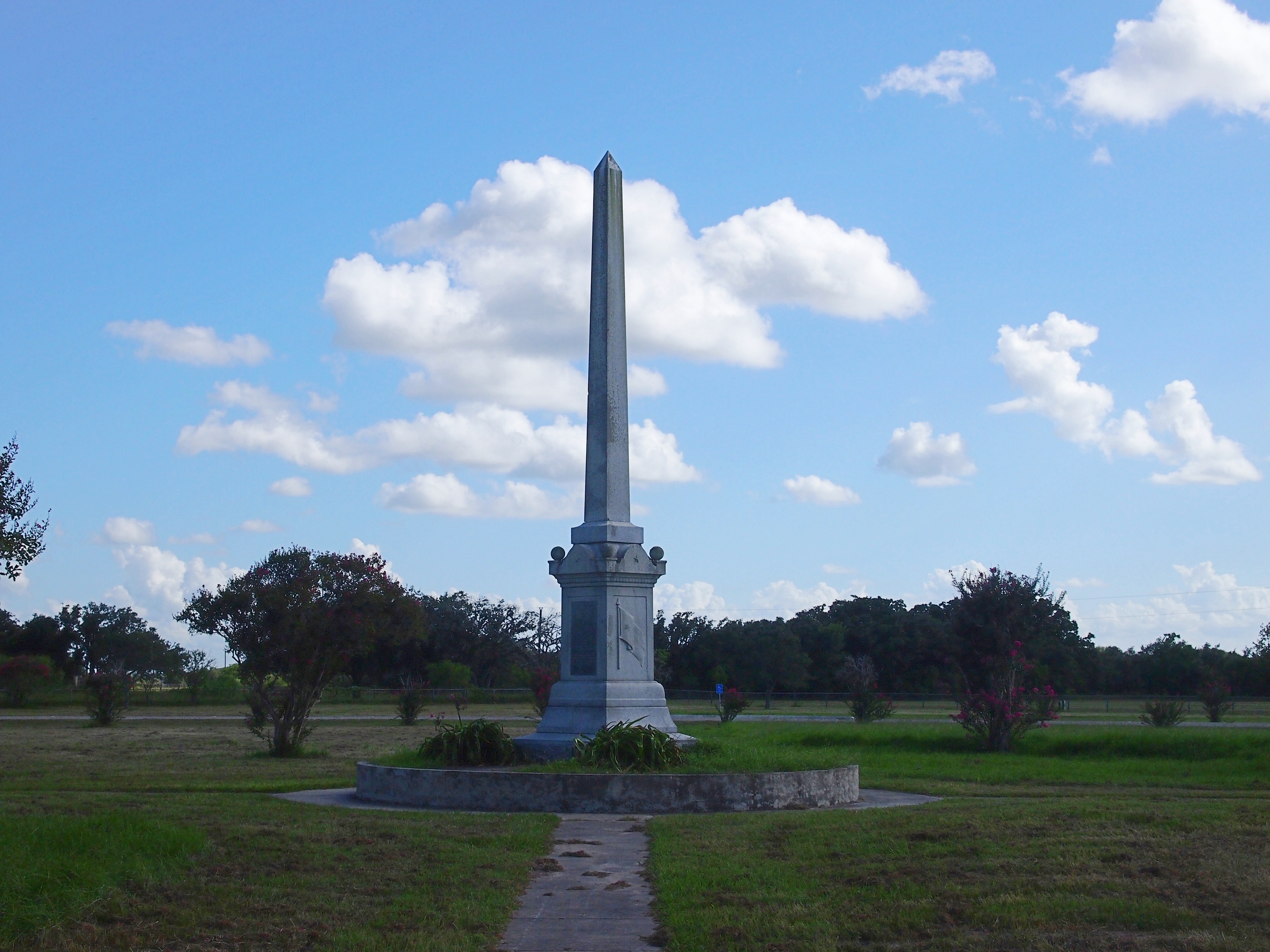The easy way to get from the greater Houston glop to San Antonio is via I-10. That route has its interests, such as Flatonia and Schulenburg and not far away, the Painted Churches, a few of which I’d like visit someday. But on the 11th, I had other things in mind, and followed US 59 southwest out of town.
Or rather, the future I-69. Every 20 or 30 miles, a sign told me that the current route of US 59 — which is already mostly a four-lane highway between the outskirts of Houston and Victoria — would someday be a bone fide part of the Interstate system running all the way to Laredo. For ordinary drivers like me, I’m not sure of the value, since on an Interstate you can’t use turnarounds in the medians, as you can — and as I did a few times — on a large US route. But looking at a map, I can also see the advantage of an I-69 through Texas for trucks barreling up from Mexico to points east: they can bypass San Antonio and its traffic.
Just southwest of Victoria is the Fannin Battleground State Historic Site, where Col. Fannin surrendered to Gen. Urrea after the Battle of Coleto not long after the fall of the Alamo. An obelisk marks the site.
Soon after the surrender, of course, Fannin and most of his men were murdered on the orders of Santa Anna, in a move that wasn’t just a crime, but a blunder. The Texas State Historical Association posits: “The impact of the Goliad Massacre was crucial. Until this episode Santa Anna’s reputation had been that of a cunning and crafty man, rather than a cruel one. When the Goliad prisoners were taken, Texas had no other army in the field and the newly constituted ad interim government seemed incapable of forming one.
“The Texas cause was dependent on the material aid and sympathy of the United States. Had Fannin’s and Miller’s men been dumped on the wharves at New Orleans penniless, homesick, humiliated, and distressed, and each with his separate tale of Texas mismanagement and incompetence, Texas prestige in the United States would most likely have fallen, along with sources of help.
“But Portilla’s volleys at Goliad, together with the fall of the Alamo, branded both Santa Anna and the Mexican people with a reputation for cruelty and aroused the fury of the people of Texas, the United States, and even Great Britain and France, thus considerably promoting the success of the Texas Revolution.”
 A little further to the southwest is the town of Goliad, seat of Goliad County. It has a handsome courthouse, as many counties in Texas do.
A little further to the southwest is the town of Goliad, seat of Goliad County. It has a handsome courthouse, as many counties in Texas do.
 Alfred Giles, a British immigrant who did a lot of work in South Texas, San Antonio in particular, designed the Goliad County courthouse in 1894. A hurricane knocked down the clock tower in 1942, but it was finally replaced in 2003.
Alfred Giles, a British immigrant who did a lot of work in South Texas, San Antonio in particular, designed the Goliad County courthouse in 1894. A hurricane knocked down the clock tower in 1942, but it was finally replaced in 2003.
On the courthouse grounds is the Hanging Tree.
 According to a State Historical Survey Committee plaque near the tree: “Site for court sessions at various times from 1846 to 1870. Capital sentences called for by the courts were carried out immediately, by means of a rope and a convenient limb.
According to a State Historical Survey Committee plaque near the tree: “Site for court sessions at various times from 1846 to 1870. Capital sentences called for by the courts were carried out immediately, by means of a rope and a convenient limb.
“Hangings not called for by regular courts occurred here during the 1857 “Cart War” — a series of attacks made by Texas freighters against Mexican drivers along the Indianola-Goliad-San Antonio Road. About 70 men were killed, some of them on this tree, before the war was halted by Texas Rangers.”
More on this little-known incident here; it isn’t to the Texans’ credit. Even so, across the street from the Hanging Tree is the Hanging Tree restaurant. How very Texas.
